Planning a trip to Thailand means you’re headed for one of the most popular tourist destinations in the world. Thailand’s abundant jungles, turquoise coves, and exquisite temples juxtapose with the glamorous skyscrapers and malls of Bangkok and the lively night markets selling fragrant curries and fresh mangoes.
Bangkok is a good starting point and will offer you an unforgettable experience of a 21st century Asian megacity. The island of Phuket and the many other tropical islands in southern Thailand, on the Andaman Sea to the west and the Gulf of Thailand to the east, are quintessential destinations for travelers looking to cool off by the sea in laid-back style.
Take a look at these top considerations and sights in Thailand, and plan your itinerary to fit in the most appealing options, while leaving plenty of time to enjoy some rest and serenity in the Land of Smiles.
Understand Thailand’s Geography
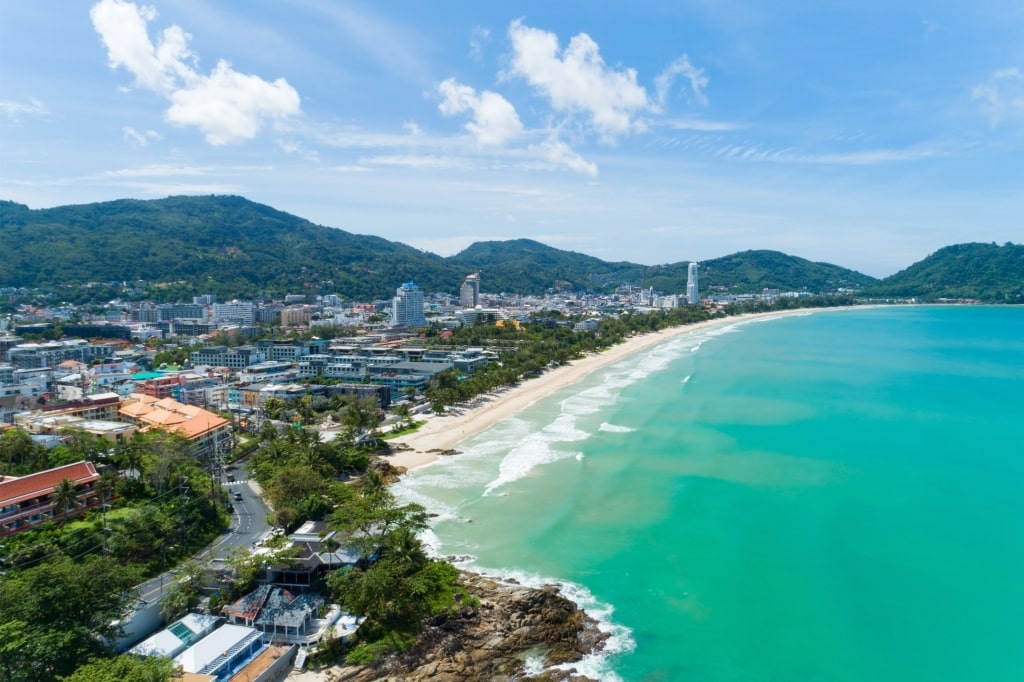
Patong Beach, Phuket
If you’re wondering how to plan a trip to Thailand, first consider how far the “Land of Smiles” stretches from north to south: more than 1,000 miles. Thailand shares land borders with Myanmar, Laos, Cambodia, and Malaysia.
Geographically, Thailand is divided into northern Thailand, known for its nature and sanctuaries, and southern Thailand, a thin land strip that extends down to Malaysia, with some of Asia’s most beautiful beaches and islands.
Bangkok is located on the Gulf of Thailand, about mid-way between north and south, and is where many visitors begin their journey.
Plan When to Go

Grand Palace, Bangkok
The ideal time to visit Thailand is between November and March, when the temperatures are comparatively cooler and rainfall is relatively infrequent. Most visitors avoid Thailand’s rainy season, which lasts from July to October, and carries heavy, sudden rains and extreme humidity.
While the dry season of November to March sees peak tourist numbers, the shoulder season of April to June attracts some visitors who don’t mind the heat and humidity and are rewarded with uncrowded beaches on the Gulf of Thailand and the Andaman coast.
April is also when the Songkran Festival—the Thai New Year’s Eve—takes place, when it’s customary to see lively street celebrations where locals and visitors alike splash water on one another to wash away and fend off bad luck.
Prepare Your Packing List

Bangkok
If there’s one tip for how to plan a trip to Thailand, it’s this: expect heat. The clothing you bring should be breathable, lightweight, and ideally made out of fabrics such as light cotton or linen, or quick-dry athletic wear. A smart Thailand packing list should skip heavy denim, leather, thick polyester, and wool. You’re sure to need little more than a cardigan even during Thailand’s coolest months.
Remember that Thailand is a Buddhist country where conservative wear is the norm, especially in less touristy areas. Bringing clothing that covers shoulders and above the knee is essential for visiting temples; alternatively, pack a large scarf or buy a sarong that you can wrap around yourself before entering a holy site.
Sunscreen and mosquito repellent are good items to bring from home as they tend to be more expensive imports to Thailand. Don’t forget flip-flops or sandals for the beach and close-toed walking shoes for markets and urban explorations.
Consider the Type of Trip You’d Like

Wat Chalong, Phuket
Temples and spirituality are a huge draw for visitors to Thailand who are interested in learning more about a country where Buddhism is practiced by the majority of the population.
There is an incredible wealth of architectural, cultural, and spiritual excursions to be had in Thailand, from visiting historic temples to observing morning alms offerings. These offerings are when residents of towns big and small line up to donate food to monks.
For those looking for a beach getaway, southern Thailand has plenty of options to offer. Phuket is known for its beautiful, accessible and swimmable beaches, while Koh Samui offers a slower pace, a focus on nature, and plenty of options for boat excursions and snorkeling.

Thai cooking class
To balance out the heat and wear of visits and excursions, wellness retreats and activities are a wonderful way to relax for a few hours while visiting Thailand. Unwind and experience therapeutic stretching with a traditional Thai massage, join a breathwork and meditation session. Sign up for a Thai cooking class to learn how to incorporate fresh, seasonal ingredients into homemade dishes.
Read: Best Tips for Traveling to Thailand
Prepare for World-Class Cuisine
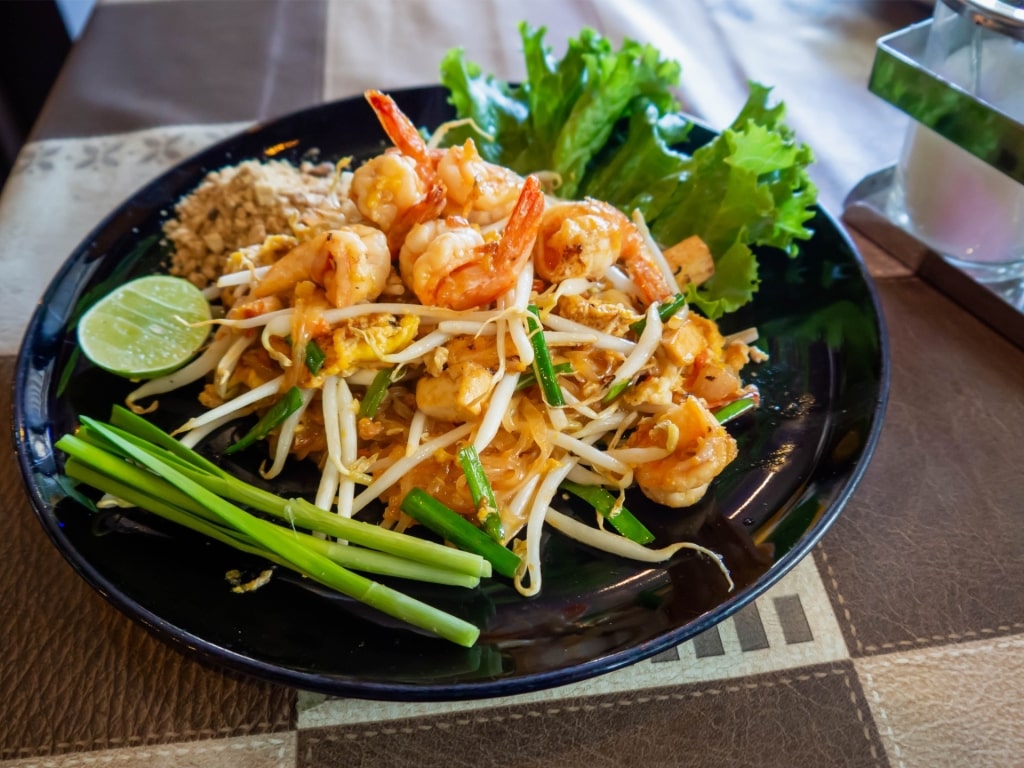
Pad thai
Planning a trip to Thailand really should include sampling the local cuisine. Thai food is considered one of the most complex, delectable cuisines in the world, celebrated for its use of fresh, aromatic herbs and spices, its streetside woks sizzling with fiery stir-frys, and its steaming bowls of well-garnished, deeply flavored noodle soups.
While you might be familiar with the mild, peanutty comfort of Pad Thai noodles from your local Thai restaurant, many Thai dishes pack a punch with spice, thanks to the firecrackers that are chopped Thai chili peppers, ubiquitous in many dishes.
If you are a spice fiend, you might ask for “Thai spicy” to sample how locals like their dishes, but for those unused to any spice, even a regular or mildly spicy dish might leave you gasping for water. Tell Thai waiters and chefs your ideal spice level: they are used to unsuspecting visitors breaking a sweat, and will be happy to go easy on you.

Tom yum
Don’t miss Thailand’s famous noodle dishes, from the sweet-and-sour Tom Yum noodle soup to the rich, brothy boat noodles found in Bangkok’s street stalls, to the creamy Khao Soi egg noodles soup with coconut milk and curry, emblematic of northern Thailand.
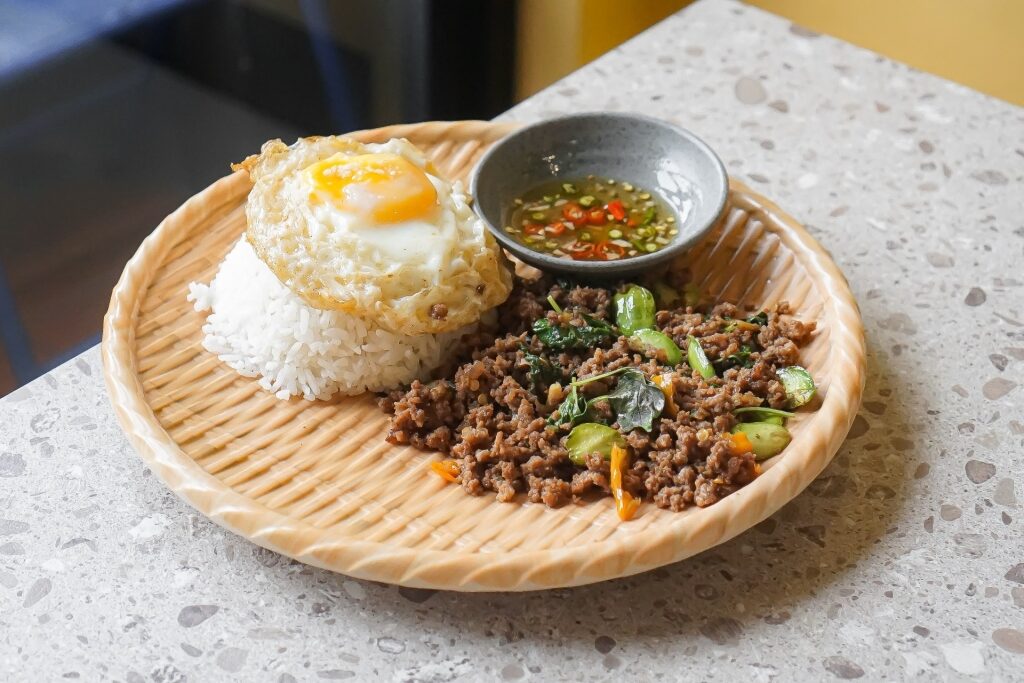
Pad krapow
Rice enthusiasts will be regaled with Pad Krapow, a stir-fry with fragrant basil, garlic, and chilies and minced pork served on steamed rice. Curries are, of course, a Thai staple: red curries are usually spiciest, green curries fragrant with sliced bamboo shoots, and yellow curries mellow and aromatic. You can usually order them with your choice of meat, and they come with steamed rice.
Another Thai treat you cannot leave Thailand without trying is mango sticky rice. This dessert is simply a fresh, ripe mango sliced and served with glutinous rice steamed with sweetened coconut milk.
What to Expect in Bangkok
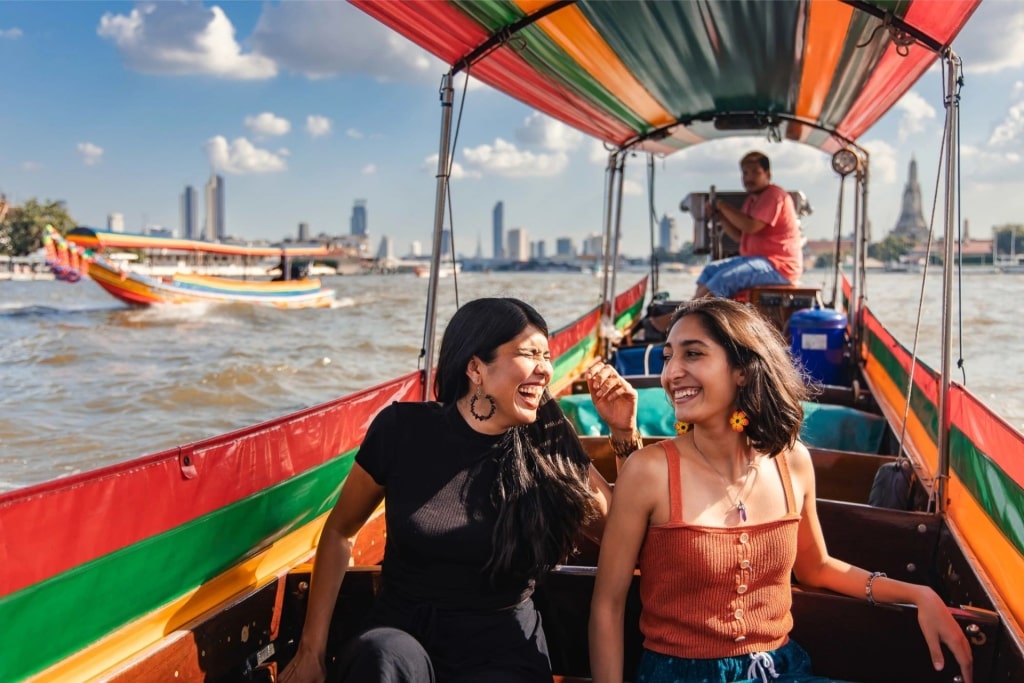
Chao Phraya River, Bangkok
The capital city of Thailand is a seemingly endless expanse of urbanity, thankfully well-connected by the BTS and MRT train systems, which will allow you to hop around neighborhoods. These range from the majestic Grand Palace royal complex along the Chao Phraya river to the trendy boutiques and cafés of Thonglor.
The Siam area is world-renowned for its luxury malls and food courts, while Lumphini Park is perfect for a pleasant stroll alongside Bangkok residents.
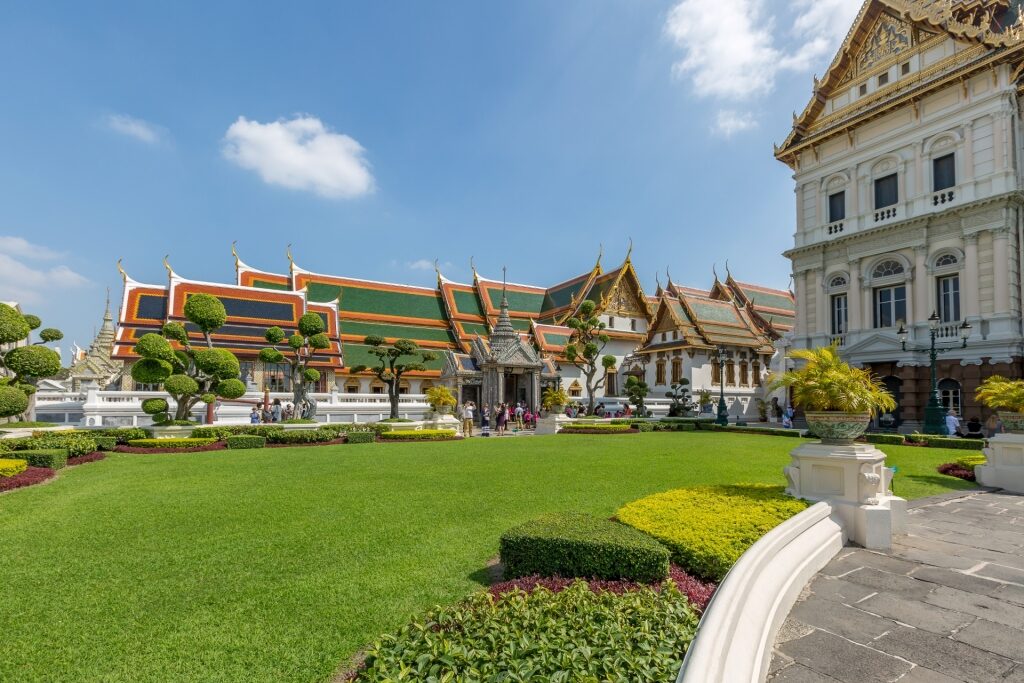
Grand Palace, Bangkok
If it’s your first time in Bangkok, you’ll likely want to fit in the architectural marvels of Bangkok’s grandest temples, including Wat Pho, with its giant reclining Buddha.
Glide down the Chao Phraya River, also known as the River of Kings, to admire emblematic landmarks from the water. You can also get a taste of Bangkok’s markets and their bustling culture by shopping in a unique fashion—by boat—at the Pattaya Floating Market.
What to Expect in Phuket
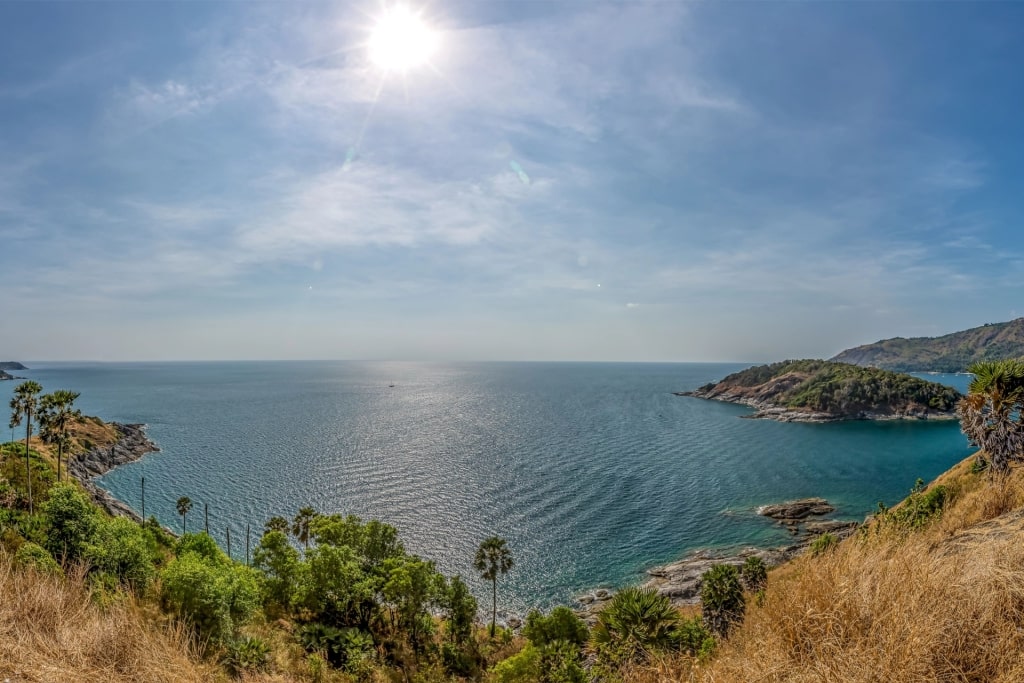
Promthep Cape, Phuket
If you’re planning to visit southern Thailand, Phuket will likely be a first stop. The country’s largest island is also its most developed when it comes to resort tourism, and you’ll find world-class beach clubs and luxury resorts lining its shores.
Consider visiting the iconic lighthouse of Promthep Cape in southern Phuket for one of the most spectacular sunsets in Thailand. Pay your respects at Wat Chalong, the most important temple on the island, with its golden stupa and panoramic third-floor terrace.
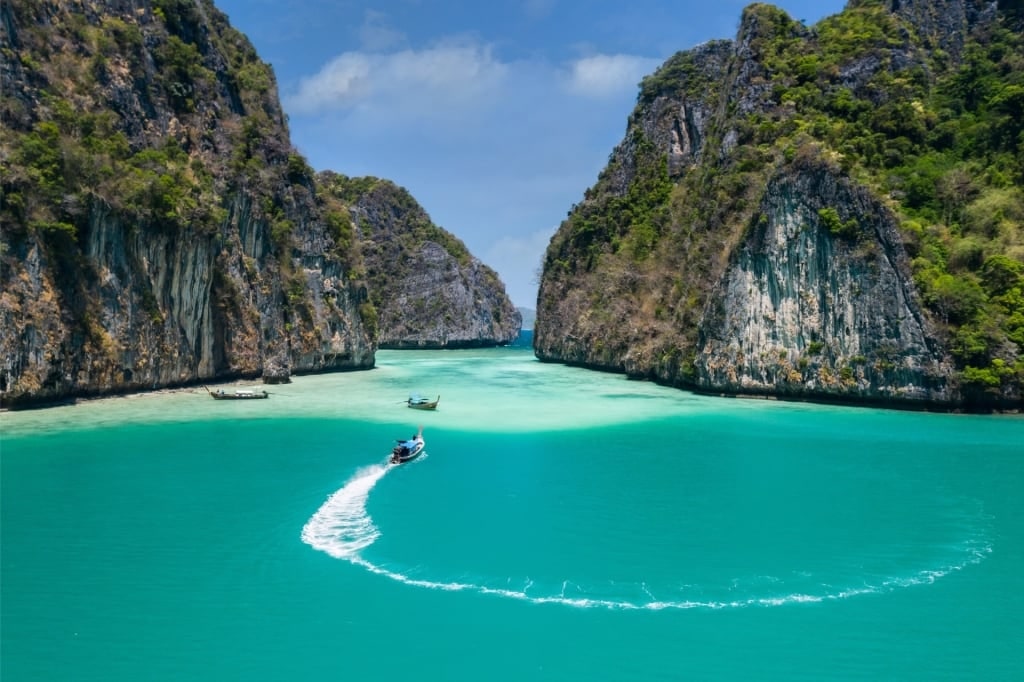
Phi Phi Islands National Park
To avoid the most crowded beaches in Phuket, join a boat excursion to Phi Phi Islands National Park, where you can disembark onto white sands and pristine waters, or snorkel to observe some of the richest marine sea life in the Andaman Sea.
What to Expect in Ko Samui

Plai Laem Temple, Ko Samui
Ko Samui is Thailand’s second largest island, located off the eastern shores in the Gulf of Thailand. Here you will find coconut groves, dense tropical rainforest, and calm beaches. It is quieter than Phuket, and also benefits from a relatively drier climate, with less chance of rain if you visit during the shoulder seasons.
On the island’s northeastern coast, you’ll find Plai Laem Temple, with its imposing giant statue of Guanyin, the Goddess of Mercy. The temple is an example of a blend of Thai and Chinese Buddhist architecture styles, with ornate halls, intricate murals, and a lake teeming with fish. It is a tranquil space for a reflective stroll, and you can observe the monks performing their daily rituals and prayers.

Ang Thong National Marine Park
For a pristine wilderness experience, explore Ang Thong National Marine Park, an archipelago of 42 islands to the east of Ko Samui. Visitors must use licensed operators to reach the park by boat, and can then relax on its uncrowded white beaches, or hike its challenging but rewarding trails to discover panoramic vistas.
A unique activity that will let you take Ko Samui’s mindfulness and nature healing back home with you is an herbal compress ball workshop. This class will teach you about the therapeutic properties of herbs such as turmeric, lemongrass, and other botanicals. You’ll learn how to make compresses and apply them to different parts of your body for improved circulation, stress relief, and muscle relaxation.
Planning a Trip to Thailand FAQs
Which month is best for a Thailand trip?
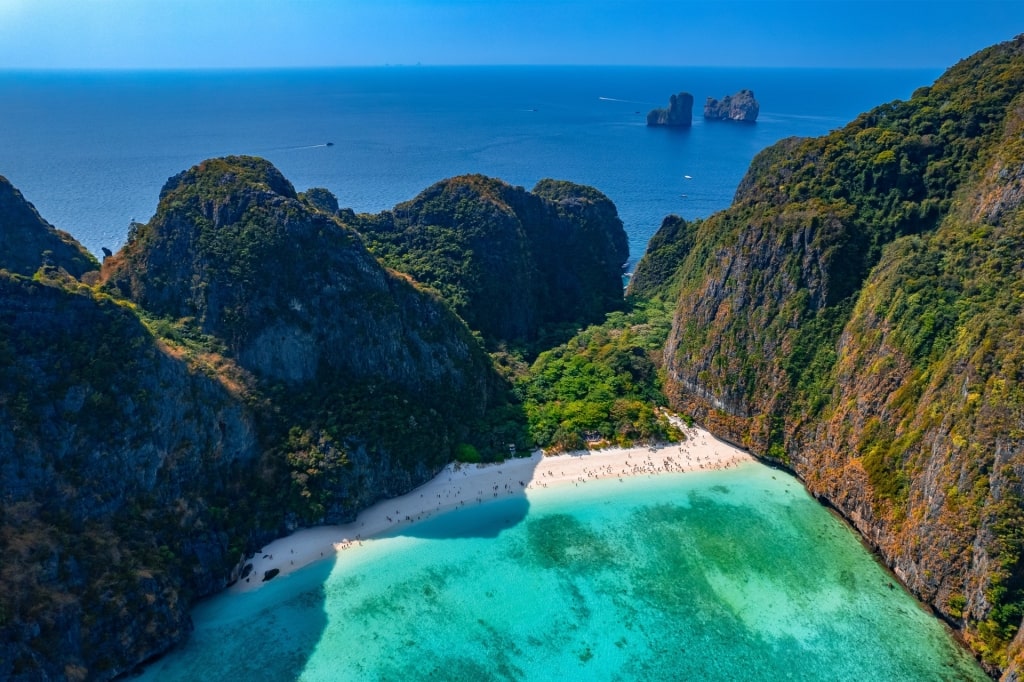
Phi Phi Islands
The dry season of November to March is generally the best time to visit Thailand, but if you have the flexibility of picking a particular month, plan your visit for January. The holiday vacation crowds will have thinned slightly, the weather is at its coolest and mildest, and the seas are comparatively tranquil for sailing, snorkeling, and swimming.
How many days should I spend in Thailand?
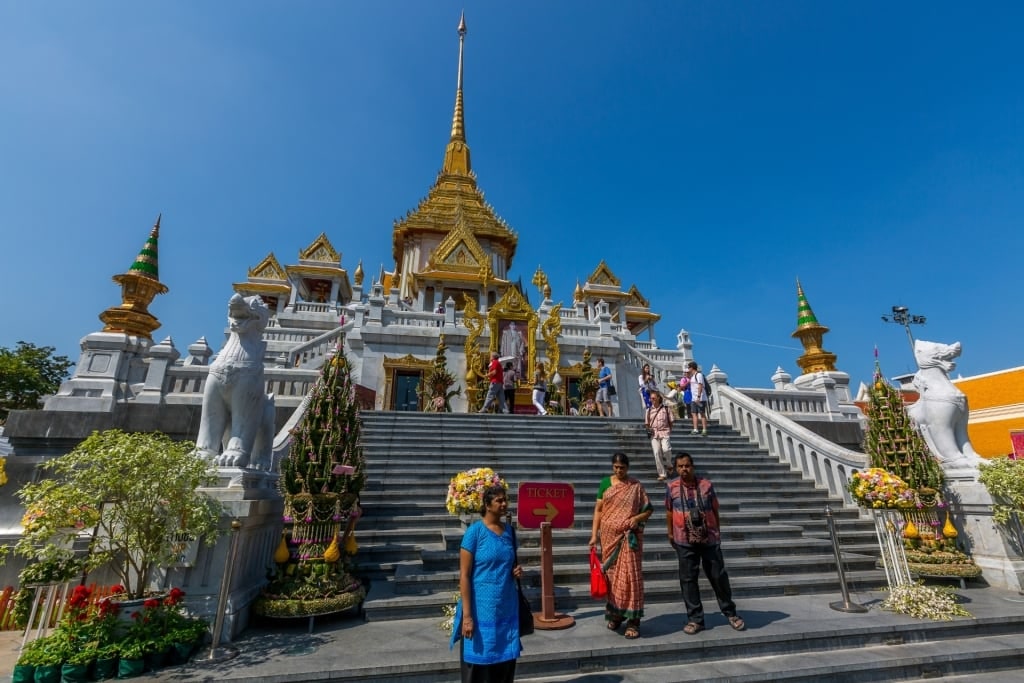
Wat Traimit, Bangkok
You could spend months exploring Thailand—but equally, only a brief visit will provide a fascinating insight into the country. Allow a couple of days in Bangkok to see the major sights, sample street food, and perhaps visit one of the markets.
In Ko Samui, you’re most likely to want to spend time on the beautiful beaches. Phuket has plenty to see in terms of local attractions and day trips further afield, but even a day or two here will give you time to absorb the culture and enjoy some blissful beach life.
What are the must-see places when planning a trip to Thailand?
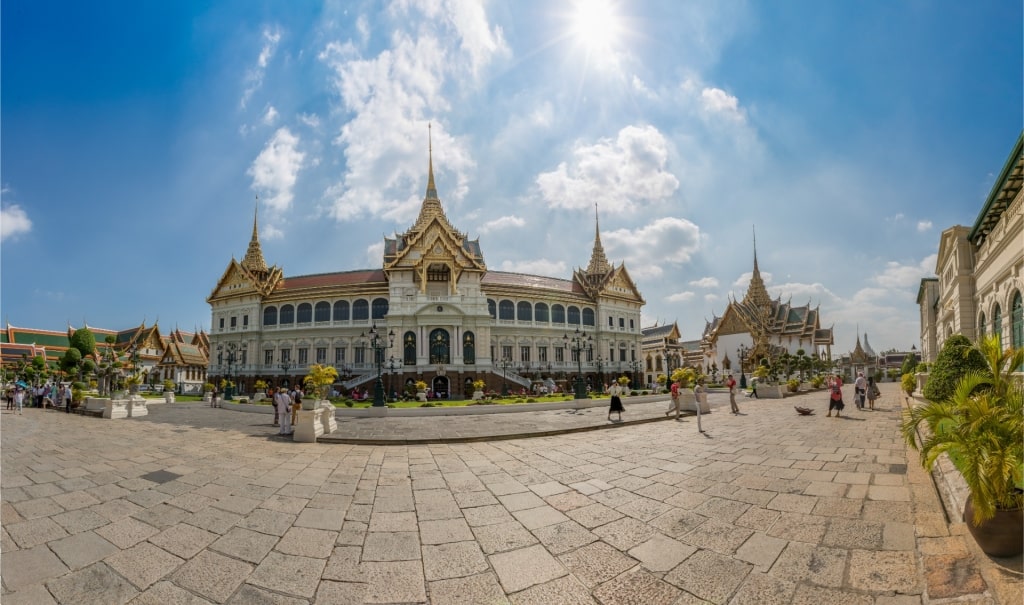
Grand Palace, Bangkok
Bangkok is worth a visit on its own to see the national treasures that are the Grand Palace, Wat Pho, the Pattaya floating market, and modern Thai city life. The most popular beach destinations lie to the country’s south, with Phuket, Ko Samui, and Krabi as the main hubs for luxury travel, gorgeous beaches, and wellness amenities.
What should I pack?

Grand Palace, Bangkok
Besides the light, breathable clothing, sunscreen, and bug repellent mentioned above, remember to bring swimwear, a sun hat, a reusable water bottle, and electrolyte tablets to keep yourself hydrated.
A power adapter will come in handy, and while most hotels and restaurants will accept credit cards, bring a debit card for ATM withdrawals of Thai baht, the local currency, to use for market purchases, tipping, and small businesses.
What are the cultural dos and don’ts in Thailand?
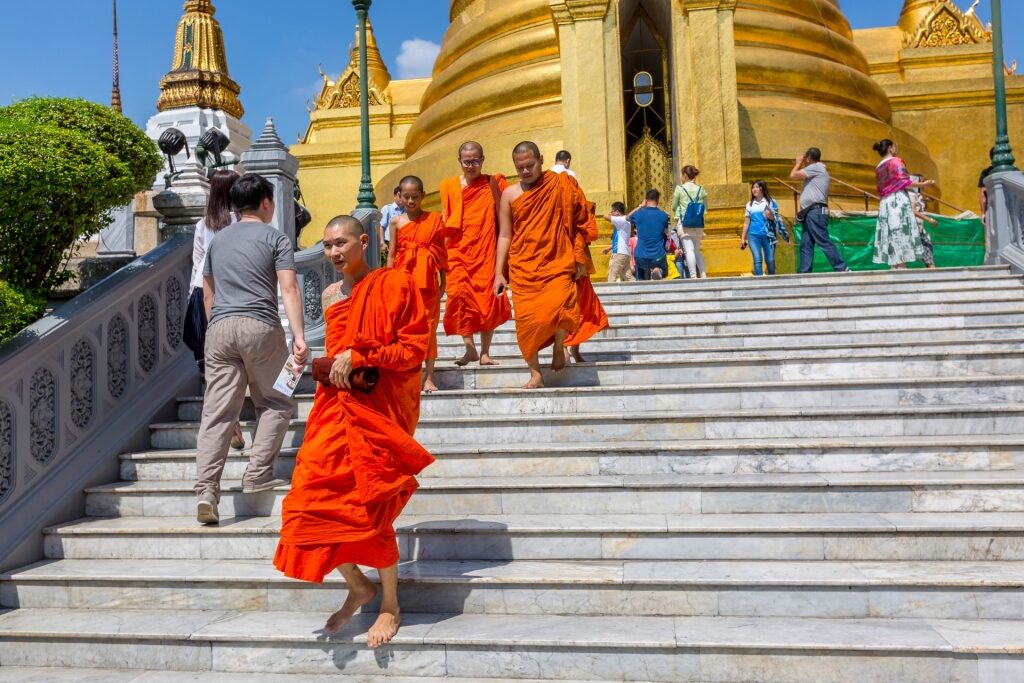
Grand Palace, Bangkok
Buddhism is a strong draw for travelers interested in exploring the temples, spiritual practices, and religious culture that Thailand is known for. Always be mindful of showing utmost respect to monks and representations of Buddha. Buying Buddha replicas or ornaments and touching Buddha statues at temples is seen as highly offensive.
While you will notice locals giving morning alm offerings to monks, be careful never to touch a monk, or directly hand them items if you are a woman. Take off your shoes and cover yourself up before entering a temple.
You may notice framed portraits of the Thai royal family in many private homes, shops, and restaurants. Always be respectful of images of the royal family, and do not joke or make comments that might cause offense.

Grand Palace, Bangkok
Do learn some basic greetings and hand gestures–a “wai” is a traditional Thai greeting of pressing palms together and bowing slightly, and you should similarly use two hands to give or receive items from a Thai person to show politeness.
Some light bargaining at markets is accepted, but avoid being overly aggressive–do it with calmness and a smile. If you rent a taxi or tuk-tuk driver for local travel, always agree on a price beforehand. Small tips are always appreciated.
In general, remember that Thailand is a generally conservative Buddhist country. To be a mindful visitor, aim to dress modestly when possible. Swimsuits are perfectly fine at beaches and resorts, but if you’re walking through a beach town or market, do cover up with a sarong.
Thailand is nicknamed the “Land of Smiles” for a reason; you will be blown away by the warmth, friendliness, and kindness that define Thai hospitality. Be ready to offer a smile right back to a culture that is as beautiful as its history and nature.
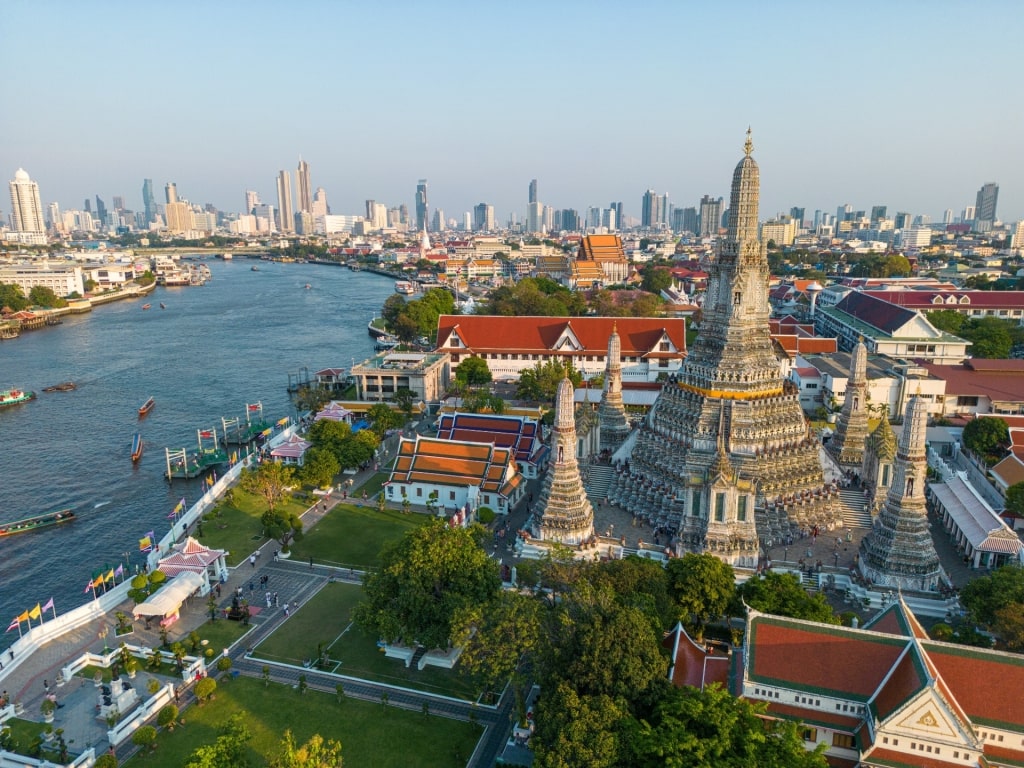
Bangkok
Discover the Land of Smiles for yourself. Browse Celebrity’s cruises to Thailand and plan your Asian adventure.


